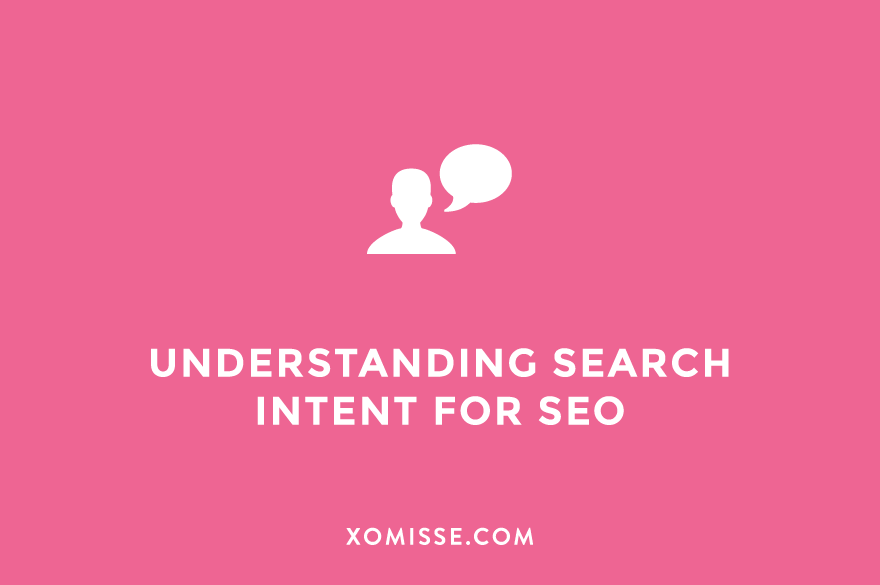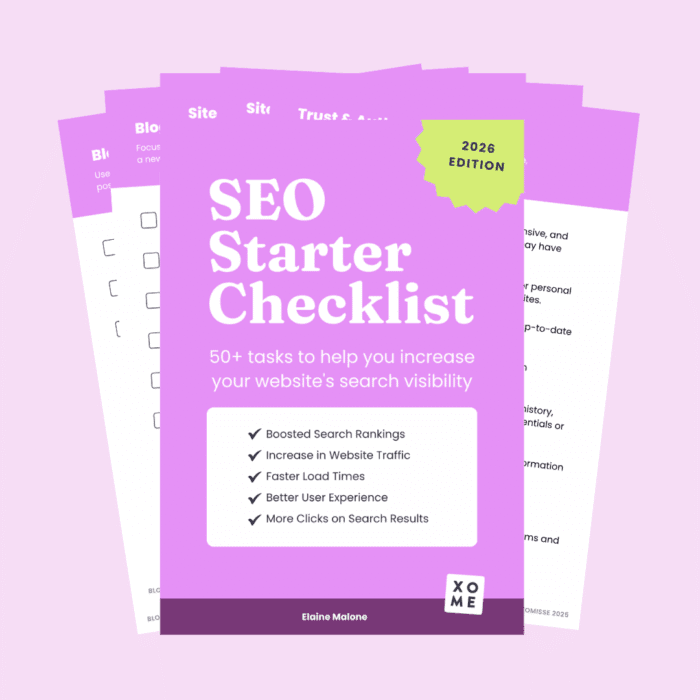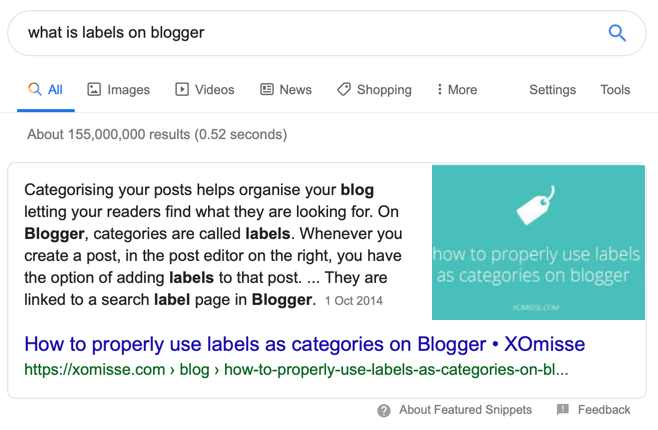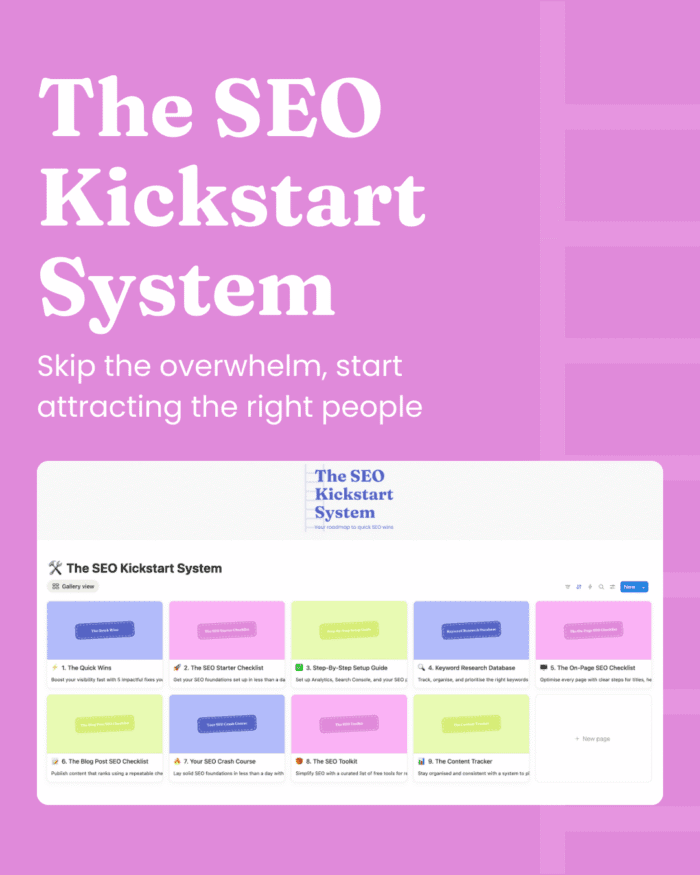You’ve probably noticed that some of your content just doesn’t perform, no matter how much effort you put into writing it. Blog posts, guides or product pages may sit unnoticed, even when they cover topics you think your audience cares about. The missing piece is often simple: your content isn’t created with search intent in mind.
Understanding search intent means looking beyond keywords to the why behind a user’s query. The words people type into Google reveal whether they’re seeking information, trying to find a specific resource or ready to take action. Knowing this can guide how you create content that actually meets their needs.

What is search intent in SEO?
Google’s goal is simple: show users the most relevant results for their queries. The words people type into the search bar reveal their search intent, and understanding this gives you a huge advantage when creating content.
Whenever someone enters a query, they’re signaling what they want to find. Are they looking to learn something new, make a purchase, or locate a specific website or resource? The answer to this question is what we call search intent, also known as user intent, the reason someone performs a search.
By recognising the intent behind searches, you can create content that not only ranks well but also truly satisfies your audience’s needs.
Types of search intent
Search intent falls into four main categories. Knowing which type a search belongs to helps you create content that matches what users are really looking for.
1. Informational intent
Users with informational intent want to learn something. They aren’t ready to buy, they just want answers, guidance, or ideas.
Words to look out for: who, what, when, where, why, how, guide, tutorial, tips, examples, ideas, learn
Examples:
- “How to start a morning yoga routine”
- “What is keyword research?”
- “When does Love Island start?”
- “How to stop lipstick smudges”
- “How to make an omelette”
Best content types: blog posts, guides, tutorials, infographics
2. Navigational intent
Users with navigational intent are looking for a specific website, brand, or resource. They already know what they want and are trying to locate it.
Words to look out for: brand names, product names, services
Examples:
- “Facebook login”
- “XOmisse SEO tips”
- “Airbnb homepage”
- “Nike running shoes”
Best content types: well-optimized landing pages, branded resources, resource directories
3. Commercial intent (pre-purchase)
These users are considering a purchase but want to compare options first. They’re gathering information to make an informed decision.
Words to look out for: best, top, cheap, affordable, review, versus, comparison, size, color
Examples:
- “Best yoga mats for beginners”
- “Top 10 running shoes”
- “Affordable ceramic mugs”
- “Vlogging camera review”
- “Mailchimp vs ConvertKit”
Best content types: product comparisons, case studies, review pages
4. Transactional intent
Users with transactional intent are ready to take action. They are looking to buy, book or sign up immediately.
Words to look out for: buy, order, deals, coupons, shipping, promo codes, discount, price, pricing, purchase
Examples:
- “Buy iPhone online”
- “Camera deals UK”
- “ASOS shipping options”
- “Namecheap promo codes”
- “Book a wellness coaching session”
Best content types: product pages, service pages, checkout or booking pages
The SEO Starter Checklist
50+ easy steps to rank on Google, increase website traffic and boost your visibility as a new business

Why search intent matters for your content
If you want your content to rank on Google, it’s not enough to just include keywords. You need to create content that matches the search intent behind those keywords. In other words, your content must give users what they’re actually looking for.
When doing keyword research, you can filter and group results by search intent. Then, you can create content that aligns with the user’s end goal. Tools like the “People Also Ask” box on Google search results can reveal the exact questions your audience wants answers to, giving you ready-made ideas for your content.

How intent affects content type:
- Informational queries are perfect for blog posts, guides, or tutorials. For example, someone searching “how to start a morning wellness routine” wants clear steps or tips, not a product page.
- Transactional queries are best served by product pages, service pages, or landing pages with a clear call to action. For instance, someone searching “buy eco-friendly yoga mat” is ready to take action.
By understanding search intent, you create content that directly addresses what users are looking for, helping them achieve their goals while boosting engagement and trust.
Bonus SEO advantage:
- Informational queries often appear in featured snippets, a great way to gain visibility.
- Transactional queries may appear in shopping carousels or product listings, so targeting them correctly can drive sales directly.

Why mapping content to user intent matters
You could spend hours optimising your blog posts for keywords, but if your content doesn’t match what people are actually searching for, it won’t rank or convert. That’s why understanding and mapping content to user intent is so important.
Here’s what it can do for your business:
- More conversions: By meeting your audience at the right stage of their journey, you guide them toward taking action – whether that’s signing up, purchasing or downloading a resource.
- Better visibility in search results: Google rewards content that aligns with search intent, giving your pages a higher chance of ranking for relevant queries.
- Higher engagement: People spend more time on pages that directly solve their problem, which also signals value to search engines.
Mapping content to user intent isn’t complicated, it’s about creating content that truly matches what your audience wants at each stage. If you want a practical, step-by-step approach to applying this in your own content, check out our post on mapping content to user intent.
Final thoughts
Keyword research is only half the battle, understanding search intent is what makes your content truly effective. When you know why people are typing a particular phrase into search engines, you can create content that answers their questions, solves their problems, or guides them to take action.
By focusing on keywords that match the right search intent for your blog or website, you’ll not only attract more traffic but also engage your audience and encourage meaningful interactions. Take the time to align your content with user intent, and you’ll see better results from every piece you publish.

Get Found Online Faster with SEO That Works
The SEO Kickstart System helps you optimise your website in just one weekend. With checklists, templates and guides, you’ll set up SEO the right way without the overwhelm.
Perfect for new business owners, creators and entrepreneurs who want to attract the right audience.